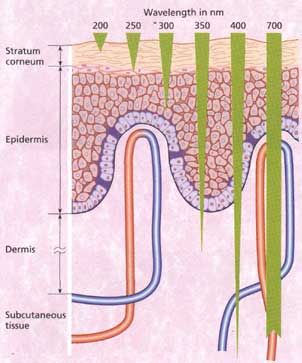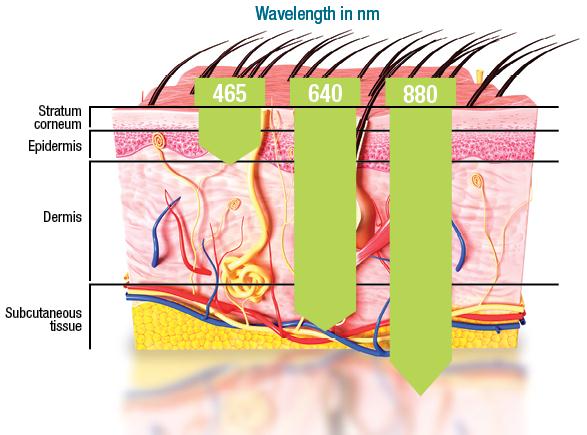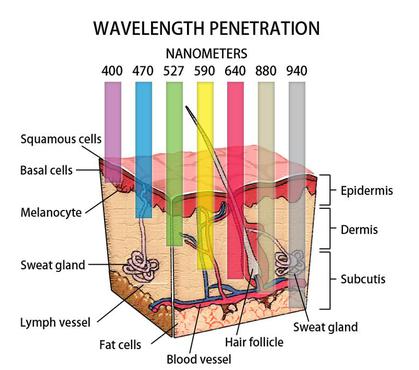Blog
Light Therapy Phototherapy – ACNE • ANTI-AGING • PAIN
What is LED Light Therapy or photobiomodulation?
Light Emitting Diode (LED) phototherapy is the application of light energy to tissue to obtain therapeutic benefits. The energy is used to improve cellular performance, healing and has anti-inflammatory properties.
Research has shown that phototherapy can: increase circulation, accelerate tissue repair, decrease wrinkles, decrease inflammation, improve skin tone, texture and clarity, ease muscle and joint pain, stiffness, spasm and arthritis and kill acne bacteria, and much more.
Minimizes the appearance of fine lines and wrinkles
- Reduces the appearance of crow’s feet
- Clears blemishes
- Improves the appearance of skin tone
- Regeneration/stimulation of collagen
- Restores skin’s natural collagen activity
- Activates fibroblast cells which create collagen and elastin
- Helps the appearance of sun-damaged skin
- Creates more skin moisture which will help fill out skin
- Increases circulation, providing a healthier skin to
- Helps in reducing melanin production, which causes brown age spots
- Promotes nutritional elements existing within the skin
- Helps the appearance of irregular pigmentation
- Lessens skin coarseness
- Lessens pore size
- Stimulates and activates metabolic function in skin cells
- Smoothes texture
- Reduces skin degradation
- Reduces the appearance of overall redness and flushing



How Does Light Energy work?
Specific wavelengths of light energy, when properly absorbed, up-regulates compromised cells. The light (photons) energy is absorbed by photoacceptors in the mitochondria and used to create adenosine triphosphate (ATP). The ATP produced then stimulates various metabolic processes which can result in the repair and regeneration of cell and tissue components.
Light therapy can:
|
In an article, “Therapeutic Light” – by Chukuku S. Enwemeka, PT, PhD, FACSM, he wrote “other reported mechanisms of light-induced beneficial effects include modulation of prostaglandin levels, alteration of somatosensory evoked potential and nerve conduction velocity, and hyperemia of treated tissues. The resultant clinical benefits include pain relief in conditions such as carpal tunnel syndrome, bursitis, tendonitis, ankle sprain, and temporomandibular joint dysfunction, shoulder and neck pain, arthritis, and post-herpetic neuralgia, as well as tissue repair in cases of diabetic ulcer, venous ulcer, mouth ulcer, fractures, tendon rupture, ligamentous, tear, torn cartilage, and nerve injury.”
INFRARED LIGHT THERAPY Pain: Invisible Near infrared dominant (880 nm)
Invisible to the naked eye, IR light penetrates deeper than any other color in the spectrum. Combating the signs of aging and accelerates healing of wounds, cuts, and damage.
RED LIGHT THERAPY Wrinkles: Red Light Dominant (625 nm to 660 nm)
Red light reaches deep layers of the skin, where it stimulates cellular repair and increases circulation to promote a more vibrant, youthful complexion. Red and IR light work synergistically to deliver optimal skin rejuvenation.
BLUE LIGHT THERAPY Acne: Blue Light Dominant (405 nm to 465 nm)
Proven to have powerful anti-bacterial properties, blue light is used to treat mild to moderate acne. Blue light also helps to purify the skin, stabilize oil glands, and soothe inflammation.
AMBER LIGHT THERAPY Complextion: 605 nm
Brings vitality to dull complexions, Amber light reduces the appearance of redness, swelling and inflammation. This color of light is beneficial for rosacea and the treatment of burns, including sunburns.
Discomfort
LED light Therapy session (Red and/or IR Light) specifically designed to address inflammation associated with trauma and/or an allergic reaction that causes discomfort with a focus on clients whonmxperience persistent problems such as joint and muscle discomfort. It is also used within 72 hours of any traumatic event including post-surgical interventions to reduce scarring and encourage normal tissue formation.
Infrared Light Therapy
Infrared (IR) light (wavelength 800nm – 900nm) energy penetrates tissue at a greater depth than the blue and red light. Approximately 50% penetrates to 8cm and decreases to less than 1% at 20cm (NASA study). Infrared energy is known to heat tissue and its effects are well documented for therapeutic pain management. For cosmetic applications, IR stimulates the NaK+ pump which increases cell membrane permeability; facilitating equilibrium of cellular pH, while increasing nutritional absorption and elimination of waste byproducts.
Red and Blue Light designed to repair damaged skin and significantly reduce the P. acnes, the bacteria responsible for causing inflammatory acne vulgaris. 15 minutes of Blue light first enters the sebaceous glands and singlet oxygen is created. Singlet oxygen then in turn kills the bacteria. Next, the client is exposed to 15 minutes of red light. This acne treatment aids in the healing process of the skin and prevents infection and scarring from occurring.
Blue light (wavelength 405nm-450nm) provides a very superficial penetration even with a high- intensity narrowband light source. It is primarily absorbed by the epidermis of the skin. Once it is absorbed, blue light targets P. acnes by stimulating porphyrins which then produce intracellular singlet oxygen and thus inducing bacterial death.
Red light (wavelength 625nm-660nm) penetrates human tissue superficially, with approximately 80% of the energy being absorbed in the first 2cm. Red light energy has a significant effect on mitochondrial stimulation, which increases the production of ATP and in turn boosts fibroblast activity. This leads to an increase in cellular turnover, superficial circulation, and an anti-inflammatory emission.
Red and/or IR Light designed to re-hydrate the face, and increase collagen and elastin formation resulting in a reduction of fine lines and wrinkles. It aids in decreasing flaccidity, lifting sagging tissues and restoring skin tone and texture resulting in an overall improvement erasing years from the face. Ten treatments are recommended. Maintenance once a month or as needed can prolong the youthful appearance.
Red and/or IR Light intended to improve discoloration caused by sun damage, chemical build-up, and chemical reactions from chemical peels, and excessive use of skin damaging products. This process normalizes the melanin within the skin. The amount of treatments needed vary depending on the amount of damage to the skin, the thickness of the skin and the age of the client. Severe conditions such as Melasma may be best treated with a combination therapy of topical ointments such as hydroquinone and/or IPL and/or laser followed by Light Therapy.
Scar Tissue – Red and/or IR Light uses powerful Infrared and red light to stimulate the reduction of fibrotic tissue and the replacement of normal tissue. Clients usually notice softening of scar tissue. They also notice flattening and widening of the scar. This is a normal sequence in scar reduction. With several more sessions the flat, wide scar will become thinner and remain flat. Some scars may appear to be resistant to this program (hypertrophic and/or keloid). If this is the case, a customized treatment protocol and/or additional treatment options may need to be considered.
Unlike conventional liposuction, the idea of noninvasive light therapy is not to remove fat cells, but to shrink them. The low level laser energy penetrates down to the fat cells and creates tiny holes in their membranes. This causes the fat cells to release their stored fatty acids, glycerol, and water into the body and then shrink, potentially resulting in lost inches. The body then flushes out the expelled fat-cell contents via the lymphatic system or burns them for energy. “Think of your fat cells as groups of juicy grapes,” Heather says. “The laser beam reaches the fat cell and shrinks the contents, and those grapes become raisins.”
More information, contact:
sschlaser@gmail.com
Whatsapp: +86 13189765513
